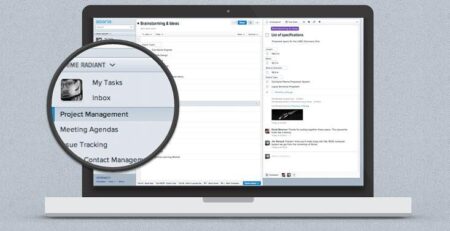3 Things Sales Leaders Need to Get Right Every Day
[block_grid_item]By Andy Roller[/block_grid_item]
On a Google Hangout I recently interviewed John Sahid. We talked about sales training and managing others in sales, the relationship between sales and marketing, social media impact on B2B healthcare sales, and the best emails received or sent in terms of connecting for sales opportunities.
Here are some quick takeaways- three key things that sales leaders need to get right:
1) Quickly show relevance and value. Enough said.
2) Tell the right economic story. Yes, it’s changed, changing, and the pace quickens with technology.
3) Invest in your people and customers. All else being equal, relationships win the deal.
John works at ASP, an Orange County, CA based medical device division of Johnson & Johnson, the world’s largest and most diversified healthcare company in the world. This past year John led a sales organization of 40. His team sells medical devices to large healthcare systems across the Western U.S. He loves the role and gets excited about investing in his team and customers.
Challenges in the healthcare B2B environment are well known, but worth pointing out. It’s a regulated environment, so there can be a lot of fear in breaking the rules, in responding in certain ways, so trust and credibility is a big deal. It’s a space that can be slow to embrace newer technology, so patience is required. Compounding this issue is that while it can feel “stuck in the past”, healthcare is also undergoing one of the fastest rates of change that you’ll find in any industry. In John’s case, the buying cycle (“selling cycle” for those of you prefer to think backwards : – ), varies from a few days for accessory products, to 1-2 years in the case of big-ticket capital equipment. Call points into healthcare sales can vary significantly, from end-users of the product to C-level suite executives.
I asked John if he sees these challenges as opportunities or obstacles. Like any good leader, he chose the right answer and pointed out the importance of being agile, responsive, and decisive in order to thrive amid the chaos.
When it comes to managing a sales team, John pointed out the tension of maintaining both strategic long term momentum while staying on top of the tactical, short term execution required to keep things moving and selling. Long term investing in your team and clients is crucial, but there’s battle for their attention – the famous “grind” of sales – on a daily basis.
In terms of tools, resources, models, John said his team uses the Integrity Selling® / AID, Inc sales model, which his team has embraced with strong results. Other divisions within J&J have recently implemented the Challenger™ Sales Model and may be considered within John’s division in the future. Personally, I’m a big fan of the Challenger™ approach![/text_output][line][container][text_output]
What about the relationship between sales and marketing?
We definitely need better integration between sales and marketing. It’s more important than ever. The relationship can make or break the organization, and like all good relationships, needs to built on trust, understanding, and compromise.
How do you personally define each term?
Sales: Executing strategies and delivering results.
Marketing: Finds and drive insights, develop and effectively communicate the strategy.
Positions within sales at the representative or sales manager level don’t require marketing experience, but at the Director / VP level, marketing experience is very beneficial in seeing the bigger picture, and as result, will likely be required.
What are some thoughts on better integrating sales and marketing?
We do our best to encourage a culture of talent transfer across sales and marketing. I was one of the the first to cross over from sales to marketing in our division, I believe this helped set an example and we’ve had others successfully transition as well.
From my experience, marketing teams that achieve strong results have a mix of team players from both a classic marketing background and others that bring significant sales and/or sales management experience.[/text_output][/container][line][text_output]I asked John about the best sales calls/emails he’s either sent or received. We agreed that having and quickly pointing to a shared connection and/or interest is best. Other aspects of winning the battle for people’s attention inside their busy inbox? Timing. Keep in mind the time of year, schedule, cycle of people to whom you’re reaching out.
An approach that never goes out of style is to ask for advice or shared experience without asking, or immediately asking, for next steps, a sale, or a next connection. Reach out, be a learner, do research, ask for advice. Tap into people you can learn from, maintain a low pressure environment, ask good questions, and most importantly, listen.
Lastly, we discussed some practical aspect of selling. John said, “Seek to get people to think differently by asking the right questions”. Yes. Do that.
Sorry, no new tricks or techniques to offer here. Apparently, John and I both are not fans of sales tricks, but we are fans of value, relevance, real connection, people, learning, and…Southern California.
[vfb id=1]










Leave a Reply